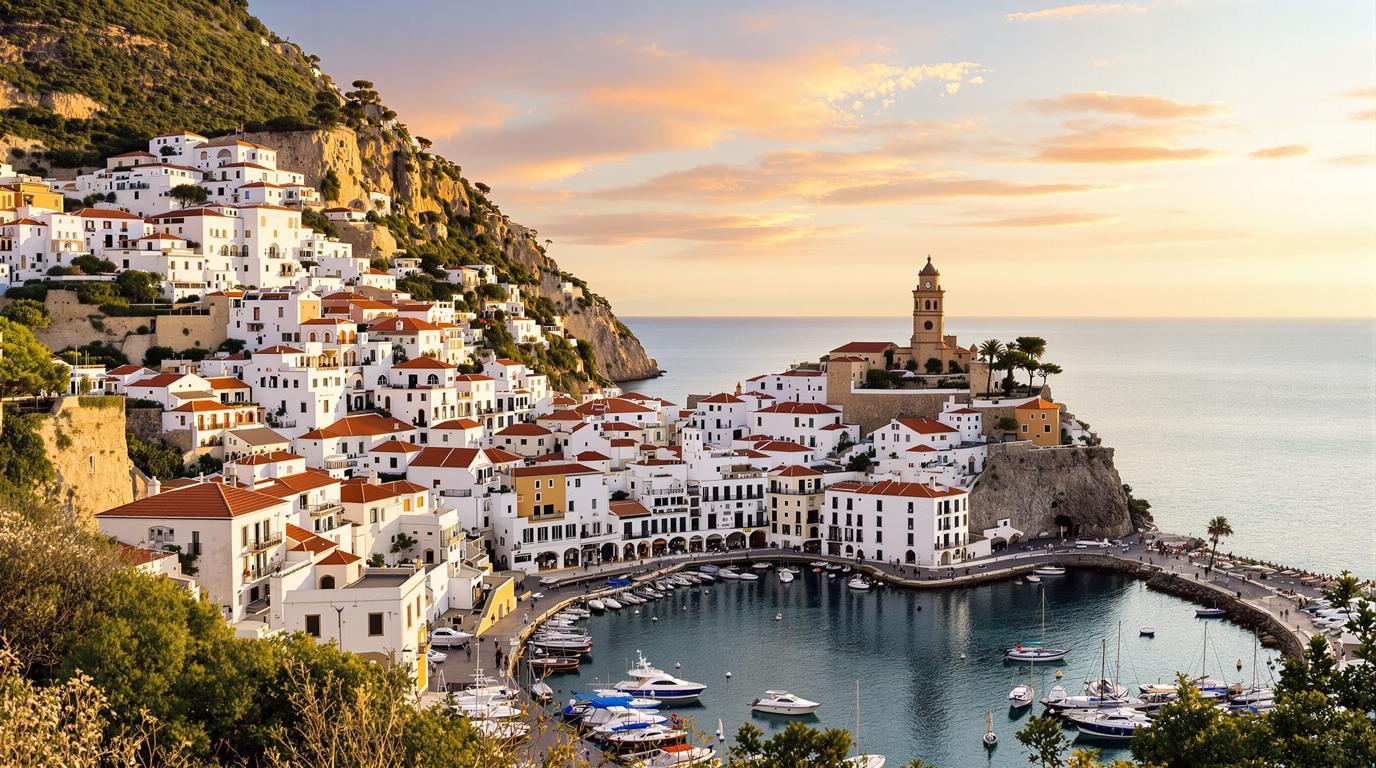Lastres: Spain’s Clifftop Fishing Village Where Time Stands Still
A dramatic coastal perch with centuries of maritime history
Clinging dramatically to a steep hillside overlooking the shimmering Cantabrian Sea, Lastres might be Spain’s most photogenic fishing village you’ve never heard of. This hidden gem in northern Spain’s Asturias region captivates visitors with its maze of narrow cobblestone streets, whitewashed buildings with colorful accents, and a rich whaling history that seems frozen in time.
“The beauty of Lastres is that it remains authentic. Despite being featured in a popular TV series, we’ve maintained our traditional fishing lifestyle and architecture,” explains Manuel Vega, whose family has fished these waters for generations.
A village shaped by the sea and mountains
Lastres offers a rare geographic harmony – where rugged mountains meet crystal waters. The village cascades down a steep slope, creating a natural amphitheater facing the sea. This unique positioning means almost every turn reveals another postcard-worthy view, with the peaks of the Picos de Europa mountains often visible in the distance.
The village’s steep streets require good walking shoes but reward explorers with character-filled corners and surprising sea vistas. Many visitors compare the experience to discovering an Alpine village frozen in time, though here with a distinctly maritime flavor.
The clock tower that witnessed centuries of whaling history
At the village center stands the iconic Torre del Reloj (Clock Tower), built in 1751. This historic timepiece once regulated the rhythms of Lastres’ thriving whaling industry. Today, it serves as an orientation point for visitors navigating the village’s labyrinthine streets.
History buffs will appreciate the manor houses (casonas) adorned with coats of arms, testament to the wealth once generated from the sea. The Church of Santa María de Sabada houses religious artifacts dating back centuries, offering a glimpse into the spiritual life of this devout fishing community.
A culinary haven for seafood enthusiasts
Asturian cuisine shines in Lastres, where restaurants like El Mirador and El Mesón del Pescador serve catch-of-the-day seafood so fresh it practically jumps off the plate. The fishing boats you’ll see in the harbor each morning supply these establishments directly.
“Our anchovies, hake, and sea bream are famous throughout Asturias,” says local chef Elena Martínez. “We prepare them simply – often just grilled with olive oil and garlic – to let the natural flavors speak for themselves.”
Where dinosaurs once roamed the coastline
Just a short drive from Lastres lies one of Spain’s most fascinating paleontological sites. The nearby Playa la Griega beach features preserved dinosaur footprints, offering a tangible connection to creatures that walked these shores 150 million years ago. The nearby Jurassic Museum of Asturias showcases these prehistoric findings through engaging interactive exhibits.
This combination of natural history makes Lastres similar to other pristine locations where nature’s wonders reveal themselves to appreciative visitors.
The San Roque viewpoint: Asturias’ most breathtaking panorama
For the most Instagram-worthy views, head to the San Roque viewpoint above town. This scenic overlook provides a sweeping panorama of Lastres, the harbor, and the Cantabrian coastline stretching into the distance. Sunset here rivals Thailand’s most dramatic sunrise experiences, with golden light bathing the village’s red-tiled roofs.
Beyond Lastres: Day trips to natural and historical wonders
Lastres makes an excellent base for exploring Asturias. The magnificent lakes and basilica of Covadonga, reminiscent of France’s pilgrimage destinations, lie just an hour’s drive away. The historic town of Cangas de Onís, with its Roman bridge, offers another compelling excursion.
Practical tips for the Lastres explorer
Visit between June and September for the best weather, though be prepared for summer crowds and higher prices. The village streets are steep and narrow, so comfortable footwear is essential. While parking exists, it’s limited – arrive early or consider staying overnight to fully experience the village’s changing moods.
Unlike some popular European destinations that now charge entrance fees, Lastres remains freely accessible to all who make the journey.
“Come in September,” recommends local innkeeper Ana López. “The weather is still lovely, the crowds have thinned, and you can experience the authentic rhythm of our village life.”
In Lastres, you’ll discover that sometimes the most extraordinary destinations are those that have resisted change, preserving their essence across centuries. Here, where fishing boats still dot the harbor and ancient streets wind toward the sea, you can step back in time while savoring the timeless pleasures of coastal Spain.
